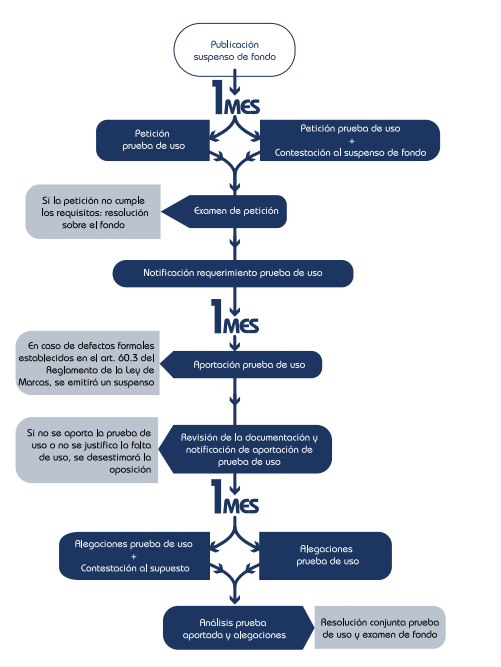The Spanish trademark system now has a new means of defense: proof of use. This change means that the trademark applicant can require the opponent to prove that genuine use has been made of the trademark on which the opposition is based. If use is not evidenced, the opposition based on that trademark will not be borne in mind.
This change has occurred following the transposition of Directive 2015/2436, of December 16, 2015, into Spanish law and is now regulated in article 21 of the new version of Trademark Law 17/2001 (TML).
The Spanish Patents and Trademarks Office (SPTO) is very optimistic about this new means of defense because (i) it will do away with unjustified monopolies and stop marks that are not been used in the market from preventing the registration of other new signs and, (ii) it will enable questions that formerly could only be remedied in court, to be solved through administrative action. Precisely for this purpose, it has just published a Handbook on Proof of Use, the main aspects of which we summarize below.
- Which applications can request proof of use?
Applications that have been filed as from May 1, 2019 (inclusive).
- Who can request proof of use?
The trademark applicant against which an opposition has been filed. This means that the SPTO, which must play an impartial role, cannot verify ex officio whether genuine use has been made of the earlier mark and neither can it suggest to or inform the applicant of this means of defense.
- Which trademarks must prove use?
Earlier marks on which an opposition has been based, provided that they have been registered for over five years.
Article 39 of the TML establishes that owners of distinctive signs must put their trademarks to genuine use within a period of five years from their registration date.
- From when is the five-year period calculated?
This depends on the kind of sign on which the opposition is based

- What does “genuine use” mean?
Genuine use means that sufficient use has been made of the mark for it to meet its essential function of indicating the business origin, i.e., of distinguishing the goods and/or services for which it has been registered.
- How is genuine use determined?
The following four aspects are taken into account:
- Place
It is necessary to evidence use of the mark in the territory in which it is protected. It does not have to be the entire territory; instead use in part of that territory is sufficient, depending on the case involved.
It is striking that the TML (article 39.3.b) considers that the mark has been put to genuine use when it is used solely for export purposes.
- Time
It must be evidenced that the mark has been used in the five-year period prior to the filing date or date of priority of the application. Total continuous use over the five-year period is not required; instead, use may not be suspended for more than five years.
- Extent
The opponent must evidence the extent to which the mark has been used. As far as this requirement is concerned, the volume, frequency, duration or intensity of use, among others, are taken into account.
- Nature of use
The proof of use must demonstrate that the mark has been used in the same manner and for the same goods and/or services specified in the registration. Photographs of goods, labels, packaging, price lists, catalogues or ads showing the mark can be used for this purpose.
The use made must be public and external. This means that use on goods for internal sale within the company or on promotional material given to employees does not count.
- Can proof of use of the mark in a different form to that registered be used?
Yes, provided that such difference does not alter the distinctive character of the registered trademark. It is important to bear in mind that the mark must produce the same overall impression on the average consumer.
- Does partial use of trademark count as proof of use?
If the mark is only being used for some of the goods and/or services for which it was registered, only those goods and services whose use has been proven will be borne in mind.
- Does use made by third parties count as proof of use?
Yes, and there is no need to evidence the contractual relationship with that third party (i) unless the SPTO has doubts in this regard or (ii) the applicant requests it.
- What is the procedure if proof of use is requested?
We reproduce below a diagram taken from the SPTO’s handbook (p.24):







